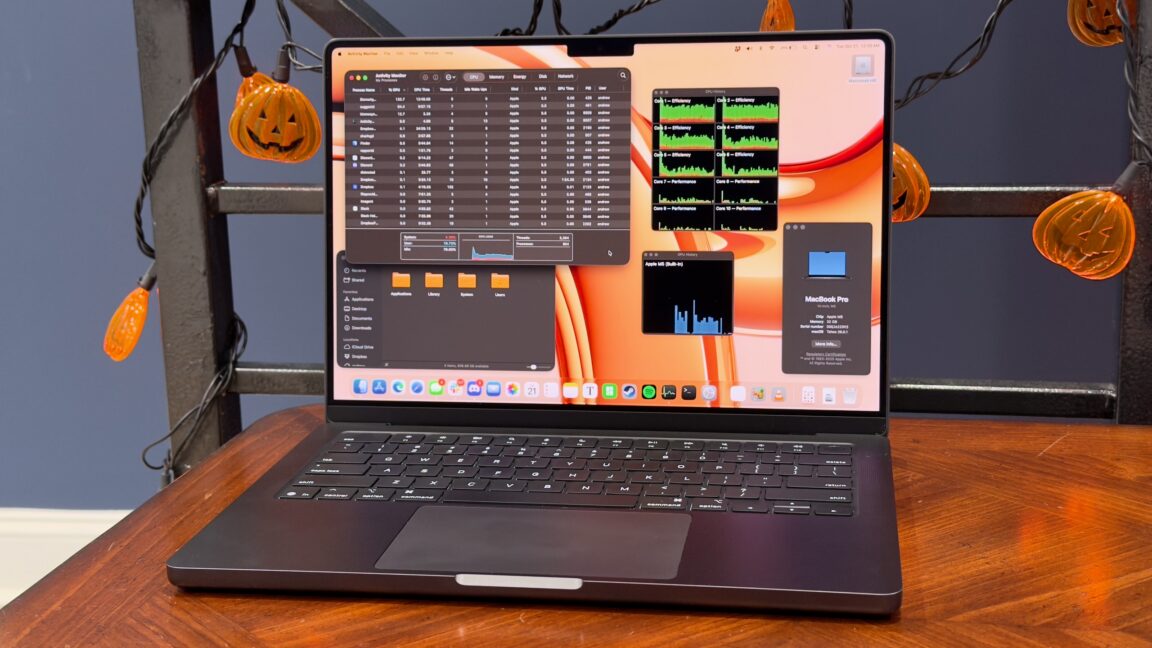M5 MacBook Pro: Familiar Chassis, Fresh Power

Introduction to the M5 MacBook Pro
Apple’s M5 MacBook Pro marks the fifth generation of Apple Silicon, delivering impressive performance upgrades while maintaining the familiar design that users appreciate. This latest chip iteration aims to offer a balanced blend of speed and efficiency, targeting both creative professionals and everyday users.
Performance Compared to Previous Generations
In benchmarks, the M5 holds its ground against the Pro and Max chips from earlier generations, trading blows in multi-core and GPU tasks. It excels in power efficiency, allowing longer battery life without sacrificing responsiveness. This makes it an appealing choice for those upgrading from older M1 or M2 models, as the M5 improves workflow speed while managing heat effectively.
Conclusion: A Familiar Wrapper with Fresh Power
While the M5 MacBook Pro retains the sleek, recognizable chassis, its internal advancements make it a strong contender in Apple’s lineup. This chip continues Apple’s tradition of pushing silicon performance forward, ensuring users get reliable power in a trusted form factor.
About the Organizations Mentioned
Apple
Apple Inc. is a leading American multinational technology company known for pioneering personal computing, mobile devices, and software ecosystems. Founded in 1976 by Steve Jobs and Steve Wozniak, Apple revolutionized technology with the first commercially successful personal computer and mainstream adoption of the graphical user interface (GUI), setting new standards in product design, user experience, and seamless integration across devices[2]. Headquartered in Cupertino, California, Apple’s product lineup includes the iPhone, iPad, Mac computers, Apple Watch, AirPods, and services such as the App Store, Apple Music, and iCloud. The company has built a vast ecosystem that enables third-party developers to expand product functionalities, strengthening its market dominance. Apple is widely recognized for its innovation in hardware, software, and services, with an emphasis on aesthetics and privacy. In 2025, Apple committed to its largest-ever investment initiative, pledging $600 billion over four years in the United States to boost manufacturing, research and development, and advanced technology sectors like artificial intelligence (AI) and silicon engineering[1][3]. This includes new manufacturing facilities, expanded R&D centers, and a program called the American Manufacturing Program (AMP) to encourage domestic production of critical components. These efforts support over 450,000 U.S. jobs and aim to establish a robust supply chain within the country[3]. Financially, Apple remains a powerhouse with a market capitalization of $3.84 trillion and annual revenue exceeding $400 billion. However, in 2025, it faced challenges including a 19% decline in stock value, intensified regulatory scrutiny from the U.S. Department of Justice over antitrust issues, legal disputes related to the App Store, and competitive pressure in AI technology[1][2]. Despite these hurdles, Apple continues to innovate, recently updating its software platforms with a unified "Liquid Glass" design and expanding its AI-driven personal assistant, Apple Intelligence[1]. Under CEO Tim Cook’s leadership, Apple balances technological advancement









